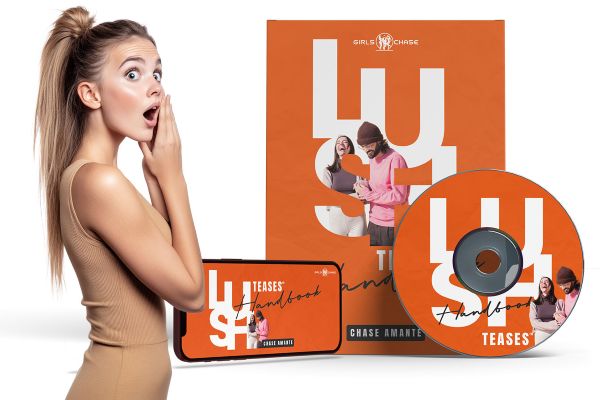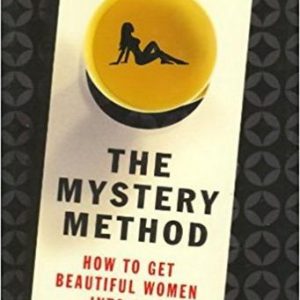No products in the cart.
[GroupBuy] Lush Teases – Girls Chase
$35.00
- Payment method: I will send the payment link to your email.
- Deliver by: Google Drive, Mega.nz
Category: Sex & Dating
Men tease for a variety of reasons, often as a way to gauge interest, build rapport, and ultimately, attract a partner. Understanding the art of playful teasing can be a powerful tool in any man’s arsenal when it comes to building connections and fostering attraction.
Table of Contents
Men Tease
The age-old dance of courtship often involves playful banter, witty remarks, and, of course, teasing. Men tease, not necessarily out of malice, but frequently as a social signal, a way to test the waters, and a means to establish a connection. This behavior, while seemingly simple, is layered with psychological and social implications. Understanding the nuances of why men engage in this behavior can illuminate the complex dynamics of human interaction, especially within romantic and social contexts.
The Psychology Behind Playful Teasing:
Why do men tease? The answer is multifaceted. From an evolutionary perspective, teasing can be seen as a form of dominance display. A man who can deliver a well-timed, witty tease demonstrates intelligence, quick thinking, and social awareness – qualities that have historically been considered desirable in a mate. Moreover, teasing creates a dynamic where the teaser isn’t overtly seeking approval. This subtle display of independence can be attractive, signaling that the man is confident and self-assured. Beyond the evolutionary angle, teasing serves vital social functions. It’s a method of assessing boundaries, gauging reactions, and building rapport. Think of it as a low-stakes way to test the waters. If a woman responds positively to teasing, it indicates she’s open to playful interaction and further connection. Conversely, a negative reaction signals a need to tread more carefully.
Teasing also plays a key role in establishing a sense of shared humor and inside jokes, fostering intimacy and connection. It creates a unique language between two people, a shared history of playful moments that strengthens their bond. Consider the couples who constantly engage in lighthearted ribbing – their teasing isn’t meant to harm; it’s a sign of affection and comfort. Furthermore, a well-placed tease can inject excitement and intrigue into an interaction. It breaks the monotony of polite conversation and adds a spark of unpredictability.
The Art of the Perfect Tease: Nuances and Boundaries:
While the theory behind teasing might seem straightforward, its execution requires finesse. The line between playful and offensive is thin, and crossing it can have detrimental consequences. A crucial element of successful teasing is understanding the context and the recipient. What might be acceptable within a close friendship could be entirely inappropriate in a professional setting, or with someone you’ve just met. Sensitivity and empathy are paramount. Before delivering a tease, consider the other person’s personality, their sense of humor, and any potential sensitivities they might have. Avoid topics that are inherently sensitive or triggering, such as physical appearance, past traumas, or personal insecurities.
The key to a successful tease isn’t to belittle or insult, but to playfully challenge or highlight a minor quirk. Focus on the situation or the behavior, rather than the person. Timing and delivery are also critical. A tease delivered with a smile, a playful tone, and a genuine sense of connection is far more likely to land well than one that comes across as sarcastic or mean-spirited. Watch the other person’s reaction closely. If they seem uncomfortable, offended, or genuinely hurt, immediately apologize and back off. It’s crucial to prioritize their feelings and demonstrate that your intention was never to cause harm. Remember, the goal of teasing isn’t to win an argument or assert dominance; it’s to build connection and create a positive dynamic.
Teasing Done Wrong: Pitfalls to Avoid:
While playful teasing, when done right, can be an effective tool in building connections, it’s just as easy to mess it up completely. The common pitfalls of poorly executed teasing are numerous and often stem from a lack of awareness, empathy, or even a misguided sense of humor. One of the most frequent errors is mistaking teasing for outright insults. There is a world of difference between highlighting a funny quirk and directly attacking someone’s self-esteem. Comments about physical appearance, intelligence, or personal choices are almost always off-limits, especially early in a relationship or interaction. Another common mistake is failing to read the room. Teasing that might be acceptable in a close-knit group of friends could be spectacularly inappropriate with a new acquaintance or in a professional setting. Context is everything.
Ignoring non-verbal cues is another significant blunder. If a person appears uncomfortable, withdraws, or gives a clear sign of displeasure (a forced smile, a change in body language), it’s crucial to back off immediately. Pushing the issue, even with the intention of being playful, can quickly turn the situation sour. Furthermore, relying on sarcasm too heavily can be a recipe for disaster. Sarcasm is a nuanced form of humor that can easily be misinterpreted, especially in text-based communication or when interacting with someone who doesn’t know you well. What you might perceive as a witty remark could easily come across as passive-aggressive or even hostile.
Finally, obsessively teasing someone without offering genuine compliments or positive reinforcement can create an imbalance in the relationship. Constant teasing can wear down even the most resilient person, leading them to feel belittled and insecure. Remember, the goal is to build connection, not to tear someone down. A healthy relationship involves a balance of playful teasing and genuine appreciation.
Female Teasers
While the concept of teasing is often associated with men, women are equally adept at deploying this subtle art form. Female teasers, often navigating a different set of social expectations, and utilize teasing to achieve a variety of goals, from flirting and building rapport to asserting their independence and subtly challenging social norms. Understanding the nuances of female teasing provides valuable insight into the complexities of gender dynamics and the diverse ways in which individuals use humor and playfulness to navigate social interactions.
The Motivations Behind Female Teasing:
The motivations behind female teasing are as diverse as women themselves. On the surface, much like with men, teasing can be a clear sign of interest. A woman who playfully teases a man she’s attracted to is often testing the waters, gauging his reaction, and subtly signaling her availability. It’s a way to initiate interaction without being overly direct, allowing her to retain control of the situation. However, teasing isn’t always about romantic intent. It can also be a way for women to build friendships, especially with other women. Shared teasing and lighthearted ribbing solidify bonds and create a sense of camaraderie. Think of it as a form of social grooming, where playful banter reinforces connections and strengthens relationships.
Beyond the social aspects, teasing can also be a subtle form of empowerment. In a society where women have historically been expected to be demure and agreeable, using humor to playfully challenge or subvert expectations can be a powerful way to assert independence and individuality. A well-timed tease can demonstrate wit, intelligence, and a willingness to push boundaries, signaling that the woman is confident and not afraid to speak her mind.
Here’s a table summarizing the diverse motivation behind female teasing:
| Motivation | Description |
|---|---|
| Flirting & Attraction | Testing the waters, gauging reactions, signaling availability without being overly direct. |
| Building Friendship | Solidifying bonds, creating camaraderie, reinforcing connections through shared banter. |
| Social Empowerment | Asserting independence, challenging expectations, demonstrating wit and a willingness to push boundaries. |
| Establishing Status | Asserting dominance in a playful manner, showcasing wit, and navigating social hierarchies. |
Navigating Social Expectations:
Female teasers often navigate a complex web of social expectations. While men are often given more leeway in terms of aggressive or assertive behavior, women are frequently held to a higher standard of politeness and agreeableness. This means that female teasing often has to be more subtle, more nuanced, and more carefully calibrated to avoid being perceived as mean-spirited or unfeminine.
One common strategy is to use self-deprecating humor. By making light of their own flaws or shortcomings, women can diffuse potential tension and demonstrate that they don’t take themselves too seriously. This can be a disarming tactic, making them seem more approachable and relatable. Another approach is to focus their teasing on situations or behaviors, rather than directly targeting individuals. This allows them to make a point or express a dissenting opinion without appearing confrontational. For example, instead of criticizing a colleague’s idea directly, a woman might playfully tease the absurdity of the situation or the challenges of implementing the idea effectively.
Ultimately, successful female teasing is about striking a balance between assertiveness and charm. It’s about using humor to express oneself, build connections, and challenge expectations, while remaining mindful of the social context and the potential for misinterpretation.
The Double Standard: Perceptions and Reactions:
Despite the prevalence of female teasing, a persistent double standard often exists in how it’s perceived and received. While men are often lauded for their wit and playful banter, women who engage in similar behavior can be labeled as aggressive, catty, or even bitchy. This discrepancy stems from deep-seated societal biases and expectations about gender roles. The expectation that women should be agreeable and submissive often clashes with the assertive nature of teasing, leading to negative judgments.
Furthermore, the perception of female teasing can be heavily influenced by physical attractiveness. A conventionally attractive woman might be given more leeway in her teasing, with her humor being seen as charming or flirtatious. Conversely, a woman who is perceived as less attractive might face harsher judgment, with her teasing being interpreted as mean-spirited or insecure.
Overcoming this double standard requires a conscious effort to challenge ingrained biases and stereotypes. It’s about recognizing that women are just as capable of wit, humor, and playful banter as men, and that their teasing should be evaluated based on its intent and impact, rather than on their gender or physical appearance. It also requires women to be confident in their own sense of humor and to not be afraid to express themselves authentically, regardless of potential criticism.
Model Tease
The realm of professional modeling often utilizes “model tease” as a form of promotion and attention-grabbing. This industry revolves around image and perception, the power of suggestion and veiled allure plays a significant role in marketing campaigns, building brand awareness, and cultivating a model’s personal brand. Understanding how model tease operates within this context is crucial to recognizing its impact on both the industry and broader societal views of beauty and sexuality.
The Art of Suggestion in Modeling:
In the world of modeling, the art of suggestion is paramount. It’s about hinting at sensuality without being overtly explicit, creating a sense of mystery and intrigue that draws the viewer in. “Model tease” achieves this through a variety of techniques, including suggestive posing, strategic use of clothing (or lack thereof), and deliberate facial expressions. The goal is to create an image that provokes curiosity and desire, leaving the viewer wanting more.
Consider the classic campaigns for perfumes or lingerie. The models often pose in ways that hint at intimacy and vulnerability, their eyes conveying a sense of longing or playfulness. The clothing, whether it’s a barely-there slip or a strategically unbuttoned shirt, is designed to accentuate the body and create a sense of anticipation. It’s not about showing everything, but about suggesting what lies beneath. This deliberate withholding creates a tension that is both captivating and alluring. This is a prime example of model tease at its finest.
The power of suggestion also extends to the model’s overall demeanor. A confident, self-assured gaze, a playful smirk, or a subtle pout can all contribute to the overall sense of “model tease.” These non-verbal cues communicate a sense of desirability and control, further enhancing the image’s seductive power.
Building a Brand Through Allure:
For many professional models, mastering the art of “model tease” is essential for building their personal brand. In a competitive industry where image is everything, the ability to project an aura of allure and intrigue can be a significant asset. Models who can effectively utilize “model tease” are often in higher demand for campaigns that require a seductive or provocative edge. They become associated with a certain level of sophistication and desirability, making them highly sought-after by brands looking to elevate their image.
Furthermore, “model tease” can be a powerful tool for building a model’s social media following. Provocative images and videos often generate significant engagement, attracting new followers and increasing the model’s visibility. This, in turn, can lead to more opportunities and greater earning potential.
However, it’s important to note that navigating the world of “model tease” requires a delicate balance. Models need to be able to control their own image and ensure that they are not being exploited or objectified. They need to be able to draw a line between suggestive poses and exploitative content, protecting their own sense of agency and self-respect.
Ethical Considerations and Industry Responsibility:
The use of “model tease” in the modeling industry raises significant ethical considerations. While it can be a powerful tool for building a brand and generating revenue, it also has the potential to contribute to the objectification and sexualization of women. It’s crucial for the industry to promote responsible practices that prioritize the safety and well-being of models.
Agencies and brands have a responsibility to ensure that models are not being pressured into engaging in content that makes them uncomfortable or that they feel is exploitative. They also need to be mindful of the impact that suggestive imagery can have on society, particularly on young people who may be vulnerable to unrealistic beauty standards and objectification.
Promoting diversity and inclusivity within the industry is also essential. By showcasing a wider range of body types, ethnicities, and ages, the industry can challenge narrow definitions of beauty and help to create a more equitable and representative media landscape. Ultimately, the goal should be to create imagery that is empowering and inspiring, rather than exploitative or objectifying. It’s about celebrating the beauty and individuality of models, while respecting their dignity and agency.
Teasegirl
The term “teasegirl,” though often used casually, carries significant weight in the digital age. It represents a complex intersection of online identity, self-expression, and, often, the commodification of sexuality. Understanding the nuances, motivations, and potential pitfalls associated with the “teasegirl” persona is crucial to navigating the evolving landscape of online culture and its impact on individual identity and social perceptions.
Defining the “Teasegirl” Persona:
The “teasegirl” persona is often characterized by a carefully curated online presence that emphasizes sensuality, flirtation, and a playful demeanor. This can manifest in various forms, from suggestive photos and videos to witty banter, engaging with audience in flirtatious ways, and a general air of mystery and allure. It’s about creating an online identity that is both captivating and slightly unattainable, drawing in followers and generating engagement.
However, the “teasegirl” persona is hardly monolithic. It encompasses a wide range of individuals with diverse motivations and approaches. Some may genuinely enjoy expressing their sexuality and sharing their playful side with the world, using their online presence as a platform for self-discovery and empowerment. Others may be more strategically constructing a “teasegirl” persona to build a brand, attract followers, and generate revenue.
It’s important to recognize that the “teasegirl” persona is often shaped by a complex interplay of personal desires, social expectations, and economic incentives. The line between authentic self-expression and calculated performance can often become blurred, making it difficult to discern the true motivations behind the online persona.
Motivations and Empowerment:
For many individuals, adopting a “teasegirl” persona can be a source of empowerment. It allows them to take control of their own image and define their sexuality on their own terms. By curating their online presence and engaging with their audience in a playful and flirtatious way, they can challenge traditional notions of female sexuality and assert their own agency.
Furthermore, a “teasegirl” persona can be a powerful tool for building confidence and self-esteem. Receiving positive feedback and attention from online followers can be validating, reinforcing a sense of attractiveness and desirability. This can be particularly beneficial for individuals who may struggle with self-image issues or who feel marginalized in their offline lives.
However, it’s important to acknowledge that the pursuit of online validation can also be a double-edged sword. The constant need for attention and approval can become addictive, leading to a dependence on external validation and a diminished sense of self-worth. It’s crucial for individuals to maintain a healthy balance and to not let their online persona define their entire identity.
Potential Pitfalls and Exploitation:
Despite the potential for empowerment, the “teasegirl” persona is not without its potential pitfalls. One of the most significant risks is the potential for exploitation and harassment. Individuals who present themselves as sensual or flirtatious online are often targeted by unwanted attention, ranging from lewd comments and unsolicited messages to outright stalking and harassment.
The anonymity of the internet can embolden perpetrators, making it difficult to hold them accountable for their actions. Furthermore, the online environment can often be highly judgmental, with individuals being subjected to slut-shaming and other forms of online bullying.
Another potential pitfall is the commodification of sexuality. When a “teasegirl” persona is primarily driven by economic incentives, it can lead to a sense of objectification and a diminished sense of self-worth. The pressure to constantly produce content that is sexually suggestive can be draining and dehumanizing, leading to burnout and a loss of personal identity.
It’s important for individuals to be aware of these potential risks and to take steps to protect themselves. This includes setting clear boundaries, blocking or reporting harassment, and prioritizing their own mental and emotional well-being.
Lush Teases
The “Lush Teases Method™,” developed by Chase Amante of Girls Chase, is presented as a structured and practical approach to using humor, specifically teasing, for seduction. Drawing from the provided briefing document, we can dissect the core elements of the method, its potential benefits, and the ethical considerations surrounding its application in the context of dating and relationships.
The LUSH Model: A Framework for Seductive Humor:
At the heart of the “Lush Teases Method™” lies a 4-part model, aptly acronymed LUSH, designed to provide a repeatable framework for creating seductive humor. While the specifics of what each letter stands for are deliberately withheld in the preview, the briefing document hints at its encompassing nature, suggesting that the model covers all stages of interaction, from initial contact to intimacy.
The promise of a structured model is particularly appealing to those who struggle with spontaneity or who lack confidence in their ability to be funny. By providing a step-by-step approach, the LUSH model aims to demystify the process of creating seductive humor, making it accessible to a wider audience.
The emphasis on the model’s universality, highlighted by its successful application by other dating experts, further enhances its appeal and credibility. This suggests that the LUSH model is not simply a reflection of Chase Amante’s personal style, but rather a set of principles and techniques that can be adapted and applied by anyone, regardless of their individual personality or background. However, It’s important to note that humor can be subjective; it is essential to consider the other person’s viewpoint.
Practical Techniques for Various Scenarios:
Beyond the underlying LUSH model, the “Lush Teases Method™” promises a range of specific techniques and strategies tailored to different situations and types of women. This practical approach addresses a common criticism of dating advice, which often focuses on abstract concepts without providing concrete tools for application.
The techniques include:
- Kickstart Teases: To initiate flirtation and break the ice.
- Qualification Teases: To encourage women to invest and demonstrate interest.
- Humor Delivery Improvement: Focusing on non-verbal cues to enhance the impact of humor.
- Teasing Rhythm: Guidance on how much, how often, and how to vary teasing.
- Sensing Opportunities: Using a “Laughter Stopwatch” to identify moments ripe for humor.
- Advanced Teases: Including “Rug pull” teases and the “Wind Suck Move” for handling bragging or annoying behaviors.
- Transitioning to Sexual Humor: Providing a simple, low-risk way to navigate towards more intimate topics.
- Suggestive Teases: Designed to subtly introduce sexual undertones into the conversation.
- Good Girl/Bad Girl Teasing: A classic technique requiring careful execution.
- Tactile Reinforcement: Strategic use of touch alongside humor.
The breadth of these techniques suggests a comprehensive approach to using humor for seduction, covering everything from initial attraction to building intimacy. The emphasis on practical application and specific scenarios makes the method particularly appealing to those seeking tangible results.
Ethical Considerations and Responsible Application:
While the “Lush Teases Method™” presents humor as a powerful tool for seduction, it’s crucial to consider the ethical implications of its application. The line between playful teasing and manipulative behavior can be thin, and it’s essential to use these techniques responsibly and with respect for the other person’s feelings and boundaries.
It’s important to remember that the goal of teasing should be to build connection and create a positive dynamic, not to manipulate or exploit someone. Teasing should always be consensual and reciprocated. If someone expresses discomfort or disinterest, it’s crucial to immediately cease the behavior and respect their wishes.
Furthermore, it’s important to be mindful of cultural differences and individual sensitivities. What might be considered lighthearted teasing in one context could be offensive or hurtful in another. Empathy and awareness are crucial for ensuring that humor is used effectively and ethically. The ability to be a men tease in healthy, fulfilling relationship take time to develop. It’s important to be mindful of the other person’s feelings – just like they should also be mindful of yours. Using teasing doesn’t always lead to a positive result and, if used to harm someone, it can have a detrimental impact on the relationship.
Conclusion
In conclusion, the art of teasing, whether practiced by men tease or female teasers, is a complex dance of humor, social signaling, and relationship-building. Model tease and the “teasegirl” persona demonstrate how allure and self-expression intersect online, while the “Lush Teases Method™” offers a structured approach to seductive humor. However, ethical considerations and respect for boundaries remain paramount, ensuring that teasing enhances connection rather than exploits or degrades. Striking the right balance ultimately determines whether teasing leads to playful intimacy or regrettable offense.
Sales Page:_https://www.girlschase.com/article/quick-sneak-peek-my-upcoming-how-tease-system
Delivery time: 12 -24hrs after paid
Be the first to review “[GroupBuy] Lush Teases – Girls Chase” Cancel reply
Related products
Sex & Dating
$29.99
Sale!
Sex & Dating
$19.00
Sex & Dating
$29.90
Sex & Dating
$5.99
Sex & Dating
$9.99












Reviews
There are no reviews yet.